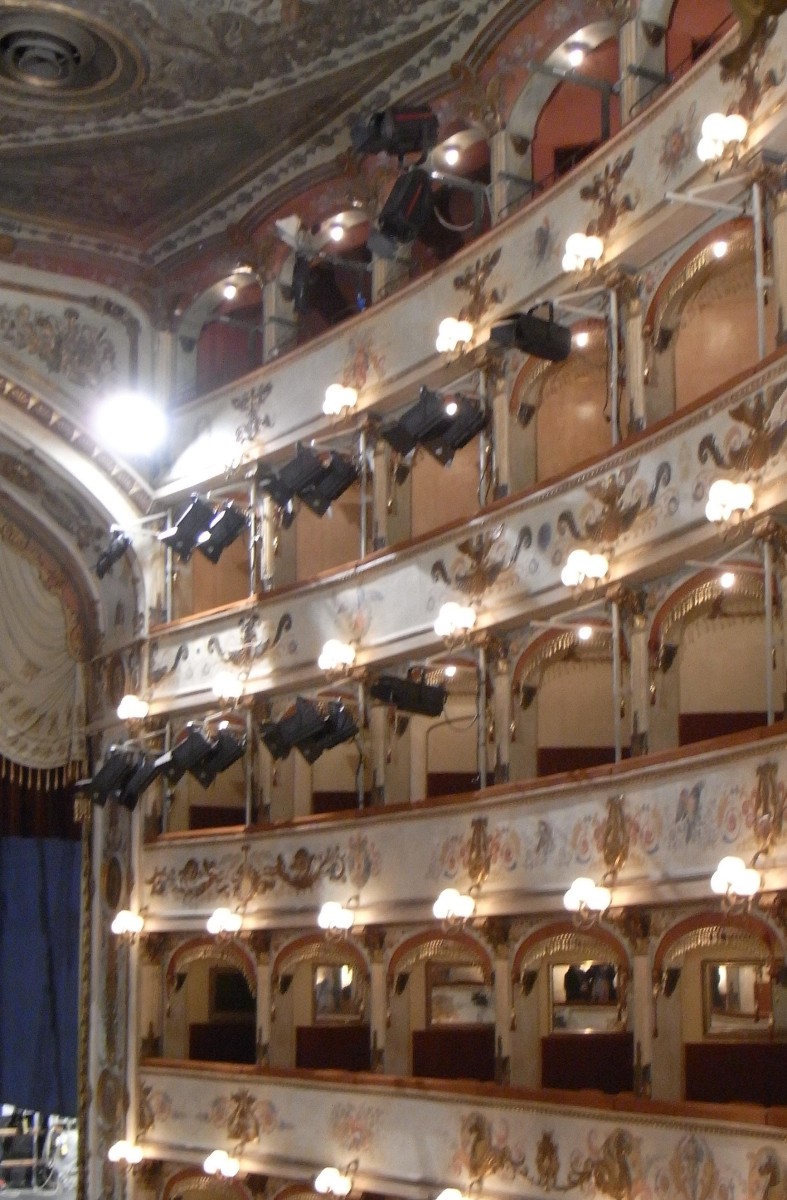Alain Platel founded Les Ballets C de la B (Les Ballets contemporains de la Belgique) in Ghent in 1984 and since then he has always taken rather large risks in creating work for the company. Out of context—for Pina is no exception.
The work begins slowly. We sit in our seats looking for a time at a bare, sparsely lit stage. We listen to the beginnings of a soundscape of animal-like sounds. Eventually, one by one, nine dancers stand up from seats in the auditorium, move to the stage, take their places upstage with their backs to us and begin to strip down to their underwear. They wrap themselves in orange blankets and turn to confront us before beginning to interact with each other. In these initial stages the interaction is minimal. The dancers nuzzle each other gently, sniff and rub against each other. They are a little like dogs greeting each other, sniffing out territory.
The work gathers pace from here with the dancers shedding their blankets to perform and returning to their folds when lesser activity is required of them. At one stage there is a kind of disco sequence when the dancers attempt to sing snatches of popular songs although their language carries a kind of speech impediment and their movements are marked by odd twitches and tics recalling physical disability.
Platel was previously a teacher for people with motor disabilities and throughout the piece his choreography explores some kind of dichotomy between apparently dysfunctional movement and a kind of transcendental power of the human body in motion. This is nowhere more apparent than in the closing solo by a male performer whom I was unable to identify (there was no program). Dragging two full-length microphone stands with him, one in each hand, this dancer seemed on occasions to have a disability, both physical in his slightly uncoordinated movements, and otherwise as he stared out at us at the end of the solo. Yet at other times he seemed more like an Olympic athlete with a javelin in each hand.
The strongest performer overall to my mind was, however, a woman who looked a little like Frida Kahlo and who I imagine was Rosalba Torres Guerrero (similar problem with identification—no program and I relied on advertising material to guess). She had a commanding presence that showed itself in every movement, large or small. She was especially remarkable in her duets with male members of the cast, which often bordered on the erotic and which involved complex partnering, and in a scene in which she lay on the ground wrapped in her orange blanket and reacted with diverse facial movements to the appearance of an opera singer (who was not one of the dancers but who appeared from the auditorium at one stage during the performance).
As for the work’s relationship to Pina Bausch, whose name appears in the title, Platel has remarked in an interview for the Canadian newspaper The Globe and Mail:
‘Pina died during the creation process, so I added on the dedication. I’d known her for 30 years and admired that special way she used dancers, transforming them into personalities. She also established the practice that any movement or thought could be used in dance.’
I would argue that there were choreographers in the United States working with the concept that anything could be dance well before Bausch. However, the notion of ‘anything’ is likely to be more expressionistic and emotionally confronting in choreography made in Europe than in a society like that of the United States, where a veil is often drawn over the less pleasant aspects of human behaviour (99% of the time the toilet is euphemistically referred to as the bathroom for example). The ‘anything’ vocabulary created for Out of context is confronting, but like that of Bausch demands that one have an opinion.
Michelle Potter, 16 November 2010
Postscript: The performance I saw took place in the beautiful old Teatro comunale di Ferrara. The construction of this theatre, whose auditorium is horseshoe shaped in the tradition of many old European opera houses, began in 1773 and much of its original decoration remains.
